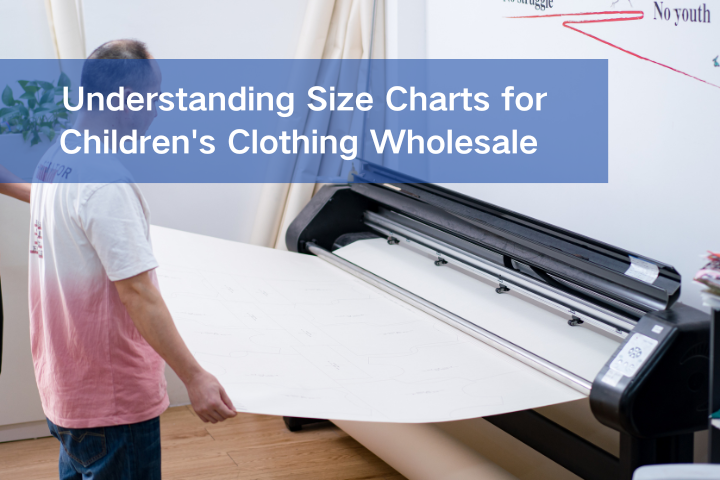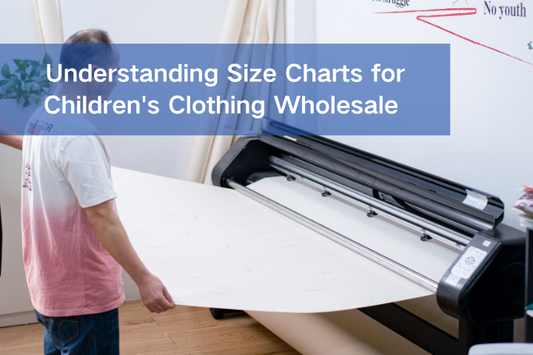Am interested
Ultimate Guide to Understanding Size Charts for Children's Clothing Wholesale Buyers

Introduction
Navigating the complexities of size charts is essential for success in the children's clothing wholesale industry. As wholesale buyers, understanding the nuances of sizing is crucial, especially when sourcing from international markets like China. This comprehensive guide aims to equip you with the knowledge needed to make informed decisions, reduce returns, and maximize customer satisfaction.
Section 1: Understanding Children's Clothing Wholesale
The children's clothing wholesale market is vast and dynamic. Wholesale buyers need to consider various factors such as trends, quality, price, and most importantly, size accuracy. Size discrepancies can lead to significant issues, from increased returns to dissatisfied customers. Therefore, having a solid grasp of size charts is vital.
Section 2: Importance of Size Charts
Size charts are the backbone of the children's clothing wholesale industry. They provide a standardized reference for sizing, ensuring that the clothing fits the intended age group appropriately. Accurate size charts are crucial because they:
- Reduce Returns: Properly fitting clothes mean fewer returns and exchanges.
- Increase Customer Satisfaction: When clothes fit well, customers are happy and more likely to return.
- Enhance Brand Reputation: Consistent sizing helps build a reliable brand image.
Different regions have varying sizing standards, making it essential for wholesale buyers to understand these differences. For instance, a size 6 in the US might differ significantly from a size 6 in China. This is where understanding the China kids size chart becomes indispensable.

Section 3: Navigating China Kids Size Chart
The China kids size chart is often different from Western size charts. Here’s a detailed breakdown:
- Age-Based Sizes: Chinese sizes often correlate with the child’s age, but it’s essential to note that children in different regions may have different growth patterns.
- Measurement-Based Sizes: Some manufacturers provide sizes based on specific measurements such as height, chest, and waist.
- Conversion: Converting Chinese sizes to Western sizes can be challenging. It’s recommended to use detailed conversion charts and, if possible, sample sizes to ensure accuracy.
Tips for Using the China Kids Size Chart:
- Request Detailed Size Charts: Always ask suppliers for detailed size charts that include measurements.
- Order Samples: Before placing a large order, request samples to verify the fit and quality.
- Communicate Clearly: Ensure clear communication with suppliers about your size requirements and standards.
Section 4: Common Sizing Issues in China Kidswear
Sourcing China kidswear can present several sizing challenges:
- Inconsistent Sizing: Different manufacturers may have varying standards, leading to inconsistent sizing.
- Label Confusion: Labels might not always correspond accurately to the sizes they represent.
- Quality Variations: Quality and fit can vary significantly between batches.
Addressing Sizing Issues:
- Work with Reputable Suppliers: Choose suppliers with a track record of consistency and quality.
- Regular Feedback: Provide feedback to suppliers regarding any sizing issues to help them improve their standards.
- Custom Sizing: Some suppliers may offer custom sizing options to meet specific requirements.
Section 5: Tips for Wholesale Buyers
As a children's clothing wholesale buyer, here are some practical tips to handle size-related issues effectively:
- Research and verify: Always research potential suppliers thoroughly. Verify their sizing standards and quality control processes.
- Build Relationships: Establish strong relationships with suppliers. Good communication can resolve many sizing issues.
- Use Technology: Utilize sizing tools and software that can help in accurate size conversions.
- Educate Your Team: Ensure your team is well-versed in understanding size charts and dealing with sizing issues.

Section 6: Case Studies and Examples
Case Study 1: Catpapa – A Reliable Partner in Children's Clothing Wholesale
Catpapa, with over 11 years of experience in the children's clothing wholesale industry, stands out as a reliable supplier. They have supplied major international e-commerce platforms such as Shein, gaining a deep understanding of foreign children's clothing requirements. Catpapa's expertise in navigating size charts and ensuring accurate sizing has made them a preferred choice for many wholesale buyers.
Example: A leading online retailer faced significant returns due to sizing issues when sourcing from various suppliers. After partnering with Catpapa, the retailer saw a 30% reduction in returns within six months. Catpapa's detailed size charts and consistent quality were key factors in this improvement.
Case Study 2: Custom Sizing Solutions
A medium-sized children's clothing retailer needed custom sizes to cater to their niche market. By collaborating with a reputable Chinese manufacturer, they developed a custom size chart that perfectly fit their customer base. This tailored approach not only reduced returns but also boosted customer loyalty.

Conclusion
Understanding size charts is critical for success in the children's clothing wholesale market. Accurate sizing reduces returns, increases customer satisfaction, and enhances brand reputation. By mastering the China kids size chart and working with reliable suppliers like Catpapa, wholesale buyers can navigate sizing challenges effectively.
Share your experiences and tips on handling size charts in the children's clothing wholesale industry in the comments below. Subscribe to our blog for more insights and updates on wholesale buying strategies and market trends.
Comments
Leave a comment
Your Email Address Will Not Be Published. Required Fields Are Marked *
10.4K Follower
Popular Posts
Subscribe Us
Subscribe to our newsletter and receive a selection of cool articles every weeks
Related articles








comment